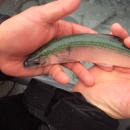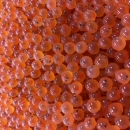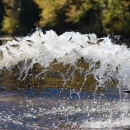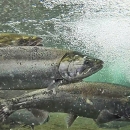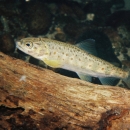Fisheries management, Population enhancement, Research
In collaboration with the Craig Brook and Green Lake national fish hatcheries, the Northeast Fishery Center developed conservation genetic management plans for breeding and raising Atlantic salmon in the hatchery. These plans are helping the United States recover distinct populations of endangered Atlantic salmon, which are only found in Maine. The genetics of incoming adult fish and their progeny are continually monitored. This information guides ongoing breeding protocols and helps us evaluate recovery.

